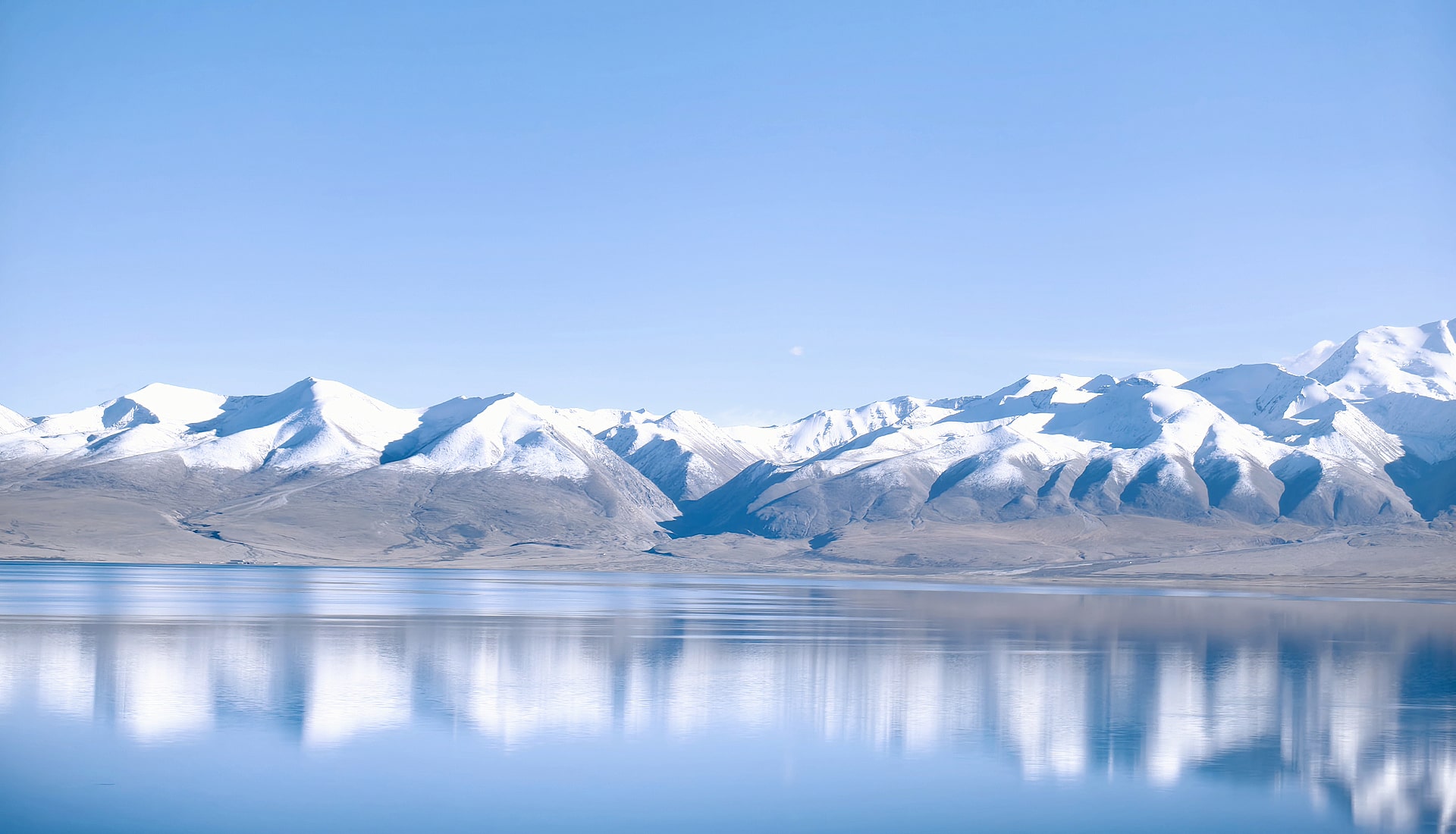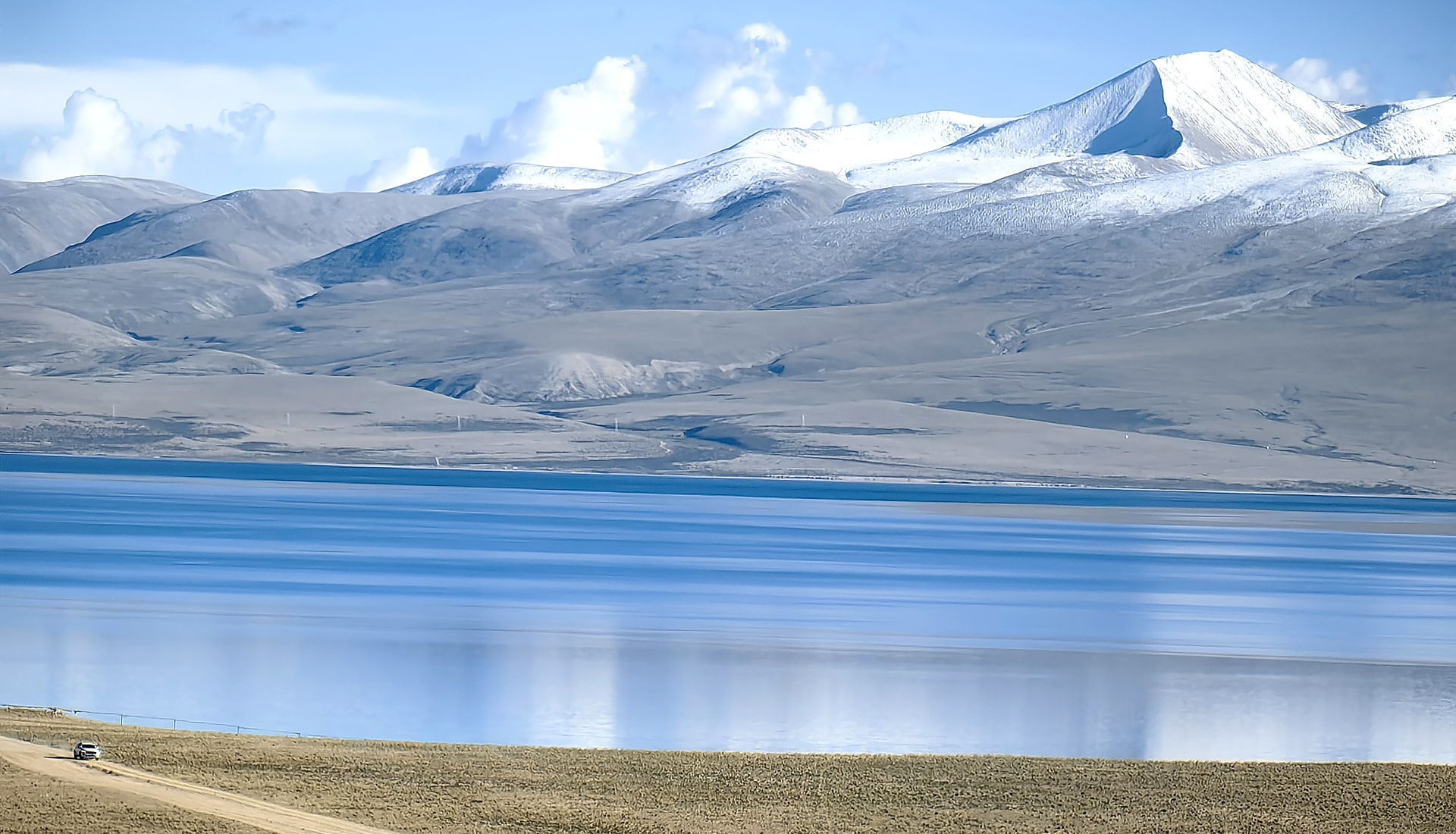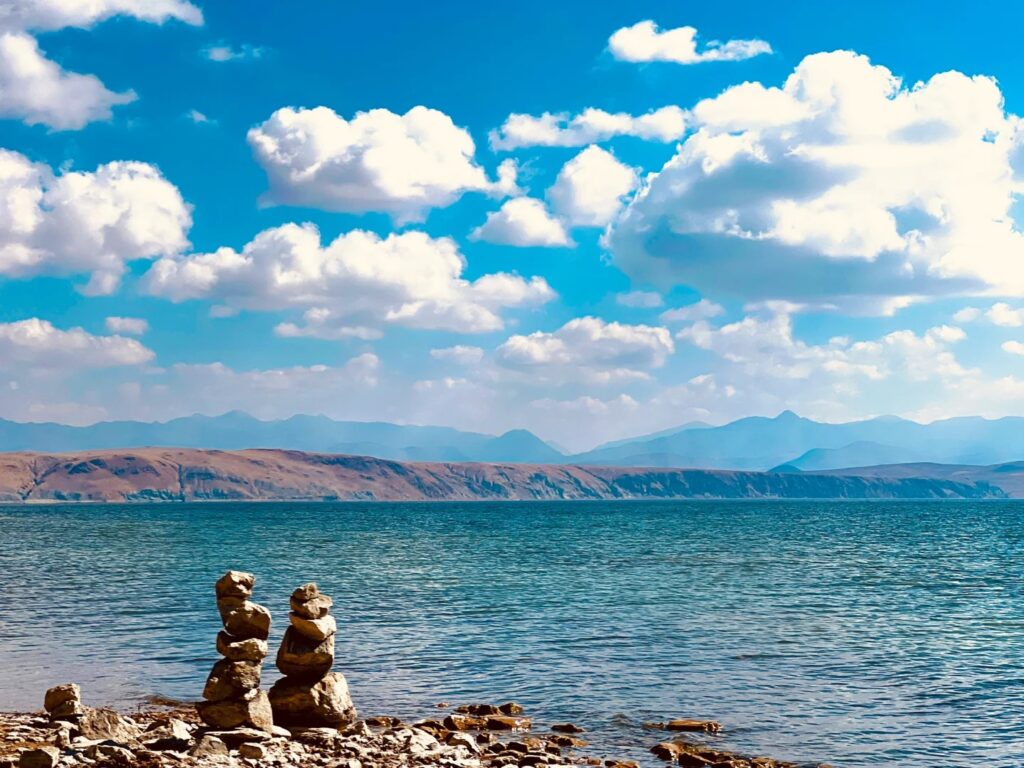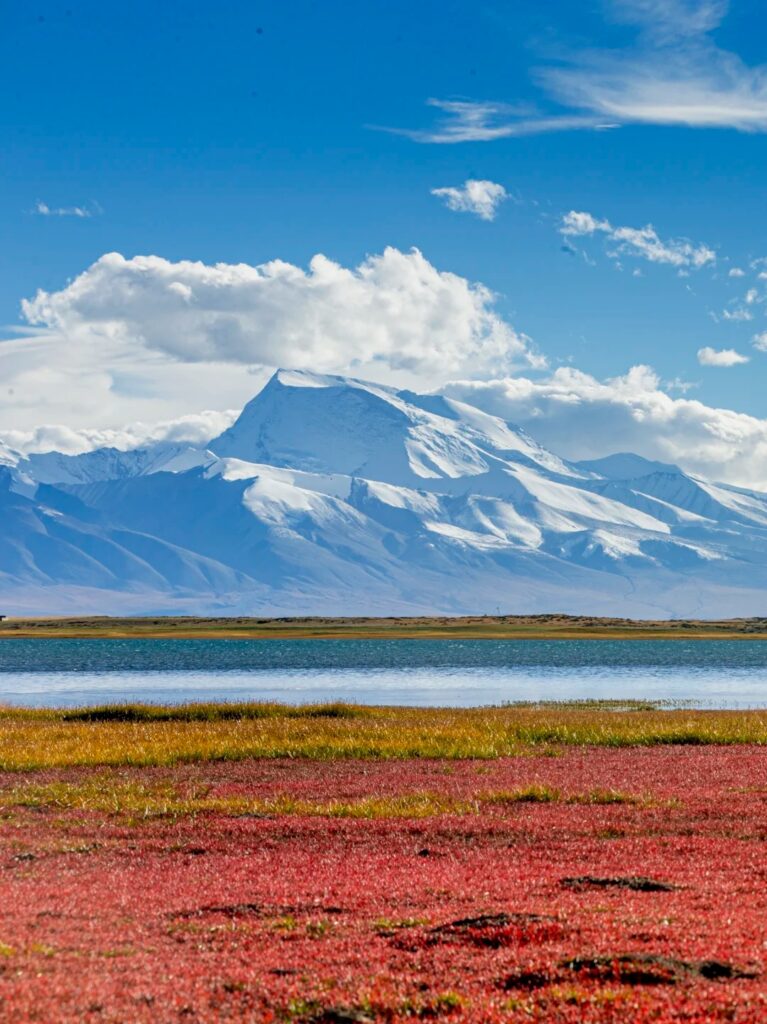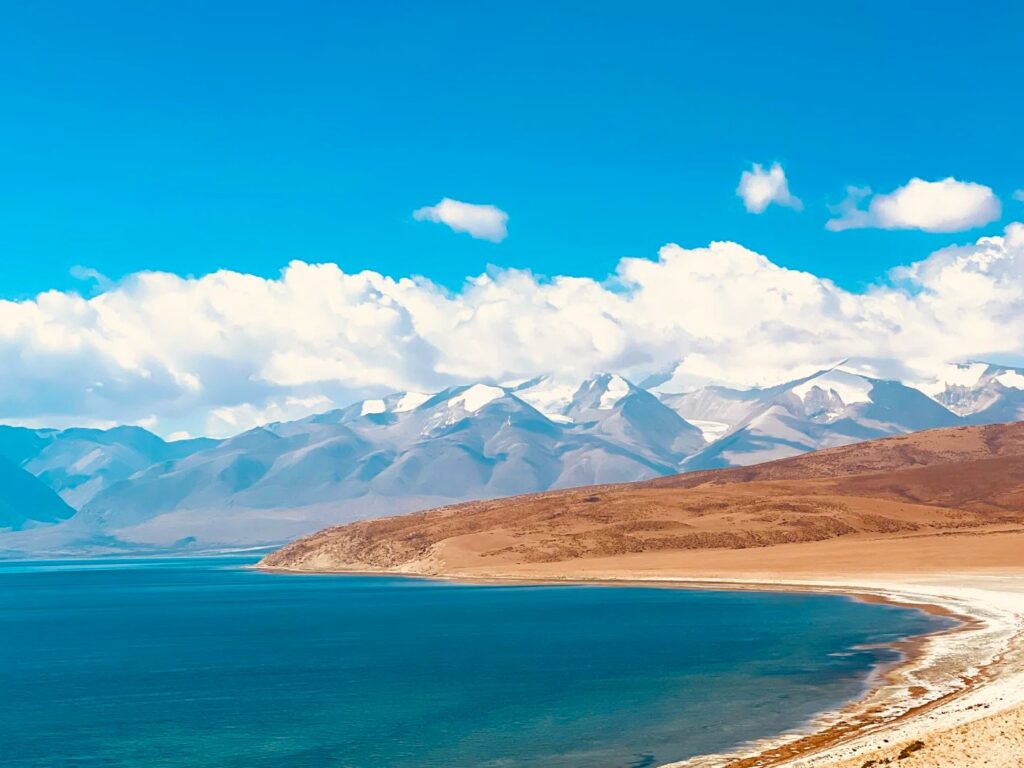Tibetan devotees named the lake “Mapang” after the dragon king Matsuray, meaning “The Eternal and Undefeated Lake” in Tibetan. According to the General History of Lake Manasarovar, King Mutri provided food and shelter for the poor and suffering for 12 years. It is said that the leftover rice water accumulated over time, eventually forming the great lake of Manasarovar.
Legend also states that in the 11th century, the Kagyu school of Tibetan Buddhism defeated a rival black sect, and the name “Mapang” was given to commemorate the triumph of Buddhism over evil forces.
Lake Manasarovar: The “Unconquered and Victorious” Sacred Lake of Tibet
Lake Manasarovar, whose name in Tibetan means “unconquered” or “victorious,” is revered as a “sacred lake” in Tibetan culture. Located in Purang County of the Tibet Autonomous Region, it lies between two majestic peaks—Mount Kailash, the spiritual summit of the Gangdise Mountains, and Mount Naimona’nyi in the Himalayas.
Also known historically as Mapam Yumtso, Mafam Co, or Machu Co, the lake was once connected to the neighboring Lake Rakshastal (also called the “Ghost Lake”). However, due to sedimentation from alluvial and glacial deposits, the two were eventually separated, and Manasarovar became a closed inland freshwater lake.
Shaped like a pear—wider in the north and narrower in the south—Lake Manasarovar spans 26 km in length and 21 km in width. It sits at a stunning altitude of 4,588 meters (15,052 feet) above sea level. The average depth is 46 meters, with a maximum depth of 81.8 meters, and it covers a surface area of 412 square kilometers. The lake is renowned for its crystal-clear turquoise water, with a remarkable transparency of 14 meters. The mineralization level is around 400 mg/L, classifying it as a freshwater lake rich in trace elements such as boron, lithium, and fluoride.
The lake is primarily fed by glacial meltwater and rainfall, with some contribution from underground springs. Its shoreline extends 83 kilometers, featuring a shoreline development index of 1.15. The eastern and southeastern banks are characterized by well-developed terraces, while numerous hot springs dot the surrounding area, enhancing its geological and touristic appeal.
The terrain around the lake includes semi-arid steppe dominated by Stipa glareosa, mixed with feather grass and purple needlegrass on alluvial fans and mountain foothills. Along the lakeshore, wet meadows and marshland vegetation thrive, including Elymus nutans, Polygonum sibiricum, Artemisia wellbyi, and Kobresia tibetica. The area supports pastoralism, and the lake is home to endemic fish species such as Gymnocypris (Mafam Kauri fish) and naked carp.
Spiritual heritage is deeply rooted around the lake. Eight Tibetan Buddhist monasteries are symmetrically distributed around Manasarovar, positioned in the eight cardinal directions, forming a sacred circle of protection:
East: Sewa Lung Monastery (Drikung Kagyu tradition)
Southeast: Nyegu Monastery (Sakya tradition)
South: Chugu Monastery (Gelug tradition)
Southwest: Gosul Monastery (Bhutanese Kagyu)
Northwest: Gyagyel Monastery, built over caves used by 500 Arhats for meditation
West: Qiw Monastery
North: Langna Monastery (Bhutanese Kagyu)
Northeast: Benri Monastery (Gelug tradition)
Lake Manasarovar is not only a breathtaking natural wonder, but also a site of spiritual pilgrimage, cultural significance, and ecological richness—a must-visit destination for any traveler seeking Tibet’s mystical soul.

